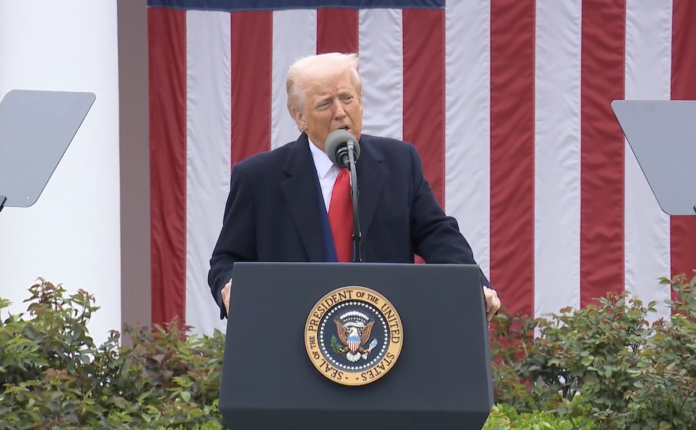
WASHINGTON (States Newsroom) — The Trump administration released significantly more detail about its budget request Friday evening, giving Congress the information it needs for lawmakers to draft the annual government funding bills.
The 1,224-page document sheds light on where exactly President Donald Trump and White House budget director Russ Vought want lawmakers to cut federal spending during the upcoming fiscal year.
The Office of Management and Budget released a “skinny” version of the annual proposal in early May, requesting lawmakers cut domestic spending by $163 billion and keep funding for defense programs flat in the dozen annual appropriations bills.
While the documents in that request provided some insight into how Trump wants to reshape the size and scope of about $1.7 trillion in discretionary funding, which is spending that Congress directs, they didn’t include the level of detail that the Appropriations committees need to begin their work.
The appendix document released Friday should aid in that, though it does not represent a full budget request. That type of proposal would include the White House’s goals for mandatory programs, like Medicare, Medicaid and Social Security, which make up about two-thirds of federal spending. Such spending is required by law and is not subject to annual appropriations.
A full budget request also typically includes tax policy proposals, though with Republicans in Congress already working to enact an extension of the 2017 GOP tax law in the “big, beautiful bill,” those sections would likely be of little use to lawmakers at this point.
Work on spending bills launching
The House Appropriations Committee is scheduled to release and debate its 12 government funding bills throughout June, before voting to send those measures to the floor.
Chairman Tom Cole, R-Okla., will likely include funding levels and policy closely aligned with the White House request, since legislation in that chamber can pass a floor vote with a simple majority
Senate Appropriations Committee Chairwoman Susan Collins, R-Maine, has a more challenging task, since regular bills in that chamber require bipartisanship to get past the 60-vote legislative filibuster. Republicans control the Senate with 53 members.
In general, that means the Senate panel’s bills tend to look much more like the final version that becomes law than the House bills, though not always.
Both chambers are supposed to reach a bipartisan, bicameral agreement on the dozen bills before the start of the next fiscal year on Oct. 1, but that rarely happens.
Congress is much more likely to use a stopgap spending bill until mid-December to give members more time to negotiate funding levels and policies on thousands of government programs.
The House and Senate were unable to reach agreement for this fiscal year, and instead leaned on a series of three continuing resolutions to keep the government up and running.
Partial shutdown could loom again
Tensions over the proposed funding cuts in Trump’s first budget request of his second term could reach a boiling point if Cole, Collins, House ranking member Rosa DeLauro of Connecticut and Senate ranking member Patty Murray cannot broker an agreement before their deadline.
Failure to enact some sort of government funding legislation — either the dozen full-year bills, or a stopgap spending measure — would lead to a partial government shutdown.
Murray, D-Wash., wrote in a statement released Friday evening that it was “telling that President Trump has chosen to release his budget on a Friday night with no fanfare whatsoever.”
“This is a draconian proposal to hurt working people and our economy, and it is dead on arrival in Congress as long as I have anything to say about it,” Murray wrote. “But this is just another reminder we need Republicans to join us to reject these reckless cuts, focus on the investments we actually need to make in our communities and security, and to finally force Trump to follow the law and end his devastating funding freeze.”
DeLauro wrote in a statement that the “government envisioned by President Trump only serves billionaires and the biggest corporations and would do nothing to lower the cost of living.”
“This is not a complete budget,” she wrote. “We are supposed to start putting together the funding bills for 2026 next week. If, as expected, House Republicans follow what President Trump has proposed so far, it is not a serious effort to deliver for the American people.”






